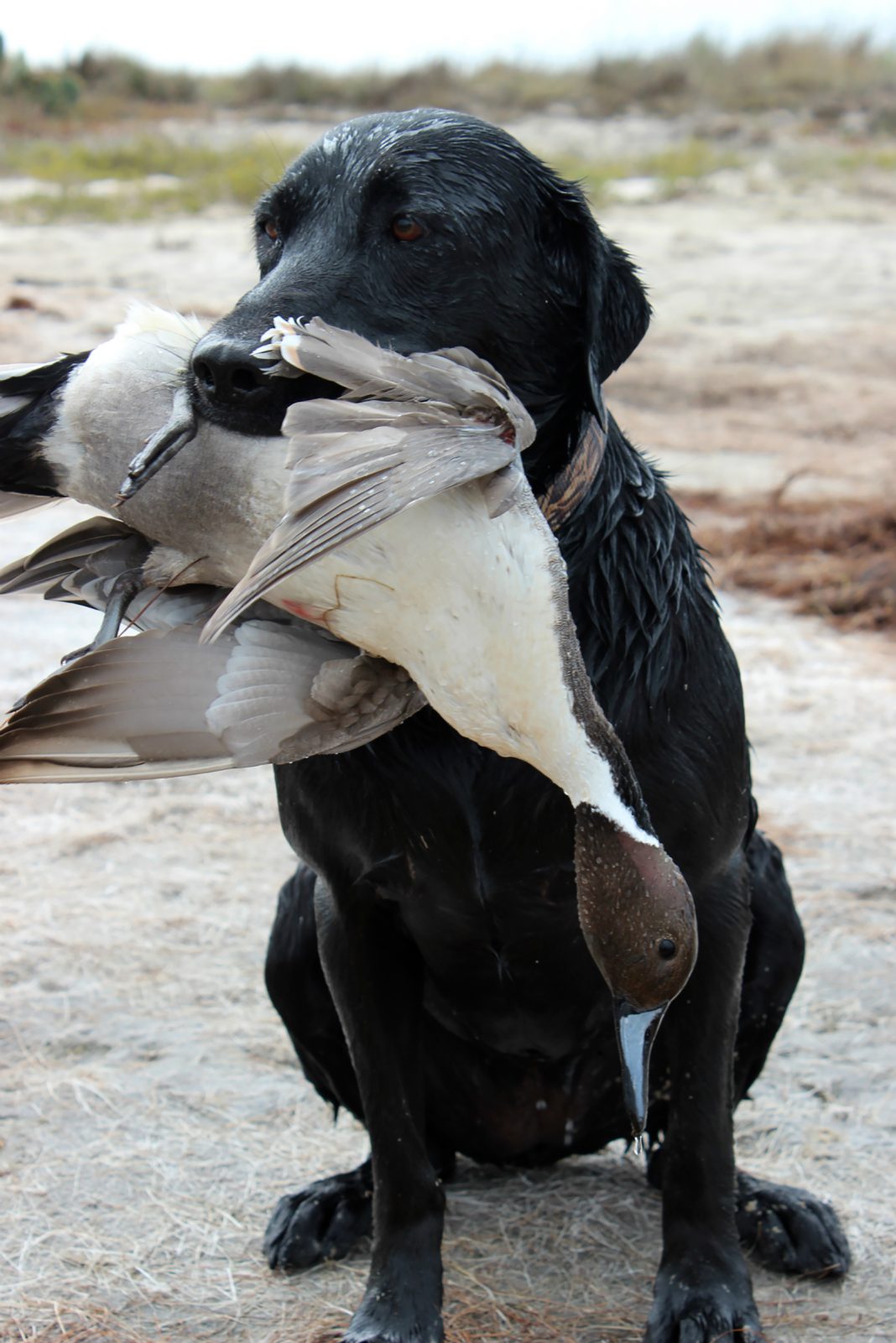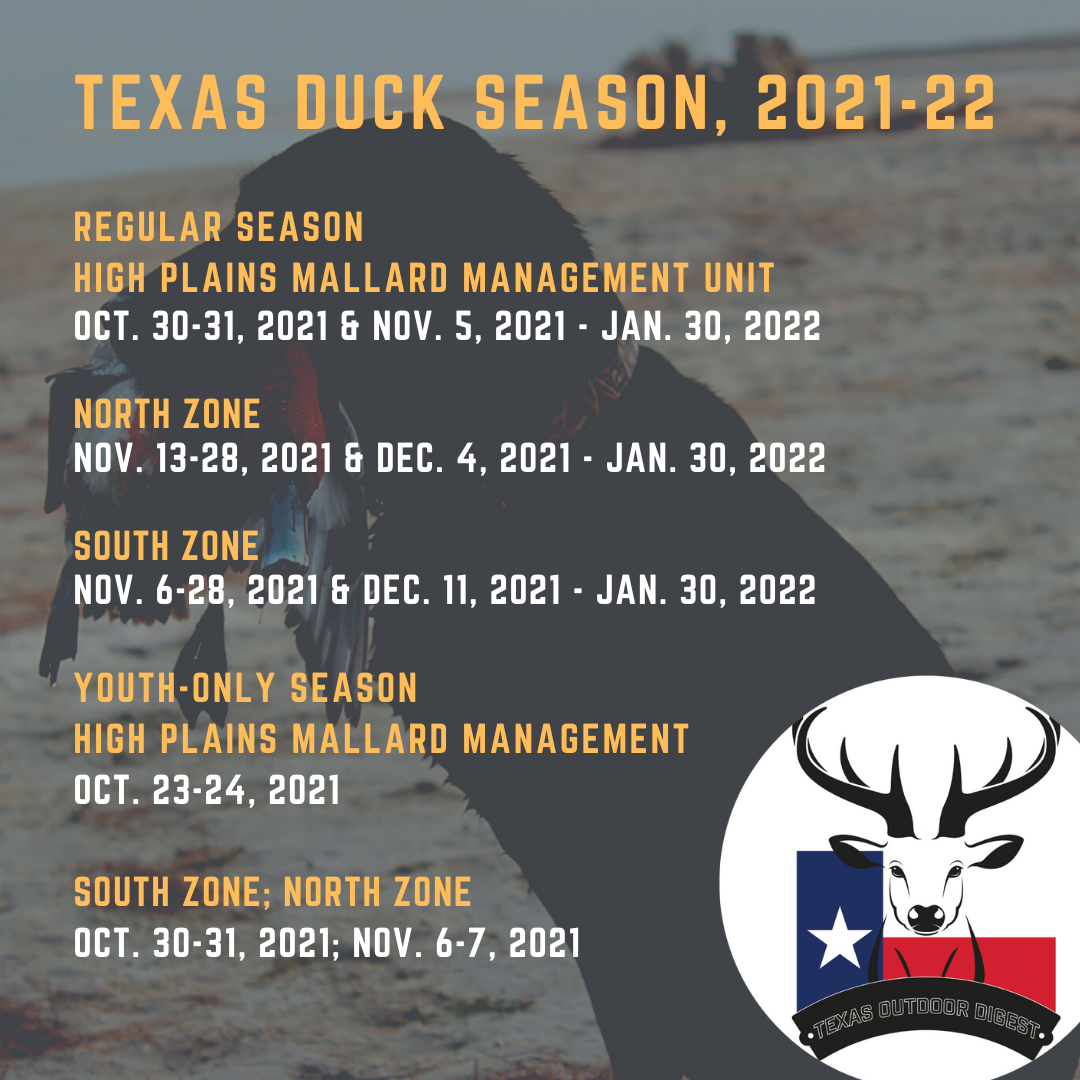
Texas waterfowl hunting is much like deer hunting in the Lone Star State: Even in what biologists and land managers term “down” seasons, we’ve still got what the average hunter would deem “good” opportunities.
That being said, the current duck hunting outlook certainly has shaped up to be mostly murky at best due to a number of important factors. Most notably, the lingering COVID-19 pandemic completely shut down biologist field work for more than a year and affected the accompanying data that provides vital overall estimates of the most important species of waterfowl. Simply put, biologists aren’t entirely sure how many ducks and geese may be headed south for hunters in the Central Flyway that includes Texas.
One notable estimate that was somewhat concerning heading into waterfowl seasons was the North Dakota Game and Fish Department’s annual breeding duck survey which indicated a drop-off in wetlands in the Prairie Pothole Region hot spot. More than a million water areas were documented in 2020 and roughly 200,000 were counted in 2021. That 80% drop was the largest single decrease noted in almost 75 years and is sure to mark a dip in overall ducks heading south.
Another key factor that undoubtedly will play a role in affecting the birds that do come down is whether or not the multiple large-scale weather events including hurricanes will negatively disturb the vital habitat along the coast that typically harbors species en masse, including pintails and redheads.
When discussing waterfowl hunting in Texas, it’s also important to note that the landscape as a whole – especially along the coast and the traditional belt of rice prairie that always provided excellent shoots – has undergone huge manmade changes that simply have pushed birds out and kept them out in recent seasons.
Kevin Kraai, longtime waterfowl program leader with the Texas Parks and Wildlife Department, noted that the duck and goose hunting your father or grandfather may have enjoyed looks very different today. However, that comes with the territory in many hunting pursuits, and luckily the Lone Star State will continue to be under “liberal” waterfowl regulations.
“The take-home message from our Central Flyway meeting (back in early fall) was that in light of two years of no waterfowl population survey (due to COVID-19 and the pandemic), and in light of a very significant drought throughout the breeding grounds, the modeling exercise conducted by U.S. Fish and Wildlife called for another year of liberal duck seasons, which is always a good thing for Texas hunters,” Kraai said. “We’ve had the liberalized frameworks dating back to the mid-1990s, and the vast majority of Texas hunters have never experienced anything other than a 74-day season. Things look very different when your duck season is only 39 days.”
Texas Wildlife Management Areas offer excellent public waterfowl hunting
The overall winter waterfowl outlook always rests on spring and summer production, and despite the lingering drought in the Dakotas and other duck breeding locales, Texas duck hunters should still be in good shape overall.
“Going into this drought in the breeding grounds we were going on multiple years of very good production and great habitat, so it appears that pulled us through,” Kraai said. “One silver lining is that the banding crews who were going throughout the Prairie Pothole Region were noticing more juvenile birds than they expected, which again just shows you these birds are really resilient, no matter the species, and they’re still doing quite well.”
Kraai noted that despite the setbacks from Mother Nature, this winter should still present good waterfowling opportunities for hunters who put in time and effort scouting and monitoring the conditions.
“While there are plenty of concerns as we head through the season, the overall conditions should put ducks where most hunters are on the Texas coast and in other hot spots,” Kraai said. “Obviously with big hurricanes, storm surge is the one thing we hate because that’s a lot of saltwater moving into freshwater environments, literally poisoning the landscape and killing things that some land managers put in work growing specifically to attract waterfowl. If a storm is just a large rain event, it’s good for the native habitat if it’s dropping a bunch of moisture though. It can help drain the saltwater from those marshes and estuaries, too.
“The thing about the Texas coast is that through many generations of settlement, the landscape has been designed to shed water as fast as possible, while also allowing for moisture to grow the foods that will attract ducks. We have been in good shape in terms of laying out the buffet that will bring in waterfowl.
“And it can also be beneficial in some ways if conditions have dried out heading through the fall and winter because it can help concentrate birds. In drier years, bay hunters on the Texas coast usually tend to actually have a better season. Those conditions push more pintails and redheads out into habitat where there’s forage sources, so that is a positive way to look at changing conditions for hunters.”
It’s always tough predict just how late-season hunts may turn out, but pintails continue to be one slight cause of concern for waterfowl biologists.
“Some prairie-nesting species like pintails certainly are affected by drought, and that probably leads to the assumption that there would certainly be fewer juvenile pintails,” Kraai said. “Pintails have seen lower numbers than other species, lower than the long-term average for a number of years, so that’s obviously one we’re keeping an eye on. Fewer pintails is definitely something that could affect hunts along the Texas coast.”
As with other manmade changes to native habitat, such as the changing nature of water flows in traditional waterfowl hot spots, human encroachment has a tendency of altering the hunting conditions for redheads and pintails in particular, Kraai noted.
“All of our migratory species are becoming more and more sensitive to human encroachment on a very large scale,” Kraai said. “Luckily for waterfowl, there are more than a million stock ponds in the middle of Texas where they can go to get away and hide out.
“Redheads are a great example of a bird that’s becoming intolerant of our activity. They just don’t react well to pressure, and it’s not just activities like hunting. There are a lot of people in our bay systems year-round recreating (fishing, hunting, recreational boating), and those birds don’t like it. All the sources that we have show that redheads in particular are being pushed into northern Mexico. Those are birds that generally would have spent all their time in the fall and winter in our Texas bay systems.”
Up in the Panhandle and Rolling Plains — long considered some of the best overall waterfowl hunting habitat — the outlook is slightly diminished, again due to Mother Nature.
“September was bad for us (up in the Panhandle and Rolling Plains),” Kraai said. “We saw some of the hottest temperatures of the year and broke into the 100s on multiple days. Then you add in 30-plus mph hour winds, which means we lost a lot of surface water in the past month. We went from being what I would say as above-average in terms of moisture levels — the amount of playa basins holding water — to back down below average.
“The High Plains can be a fickle place for waterfowl hunters and things can change with just a snap of your fingers in terms of range conditions. We’re in better shape up here than we were last year, but it’s never good to lose that much water that quickly right before the season. You never know how things will shape out, but there could be the possibility that by Thanksgiving when the hunting should be really good that we’ve lost more valuable surface moisture.
“If it does continue to dry out, that should concentrate the sandhills (cranes) and waterfowl where there is surface water. And when it comes to geese, the water levels don’t matter as much because they’ve become so adapted to the urban environment. They’ll roost inside city parks and effluent ponds of all the various small towns throughout the Panhandle, so they’re roost locations will remain stable and they’ll remain there in abundance.”
In terms of the late goose conservation order season, which had been a huge draw in the rice prairie and coastal regions of Texas, the outlook continues to remain diminished as in recent seasons.
“There aren’t near the same numbers of geese coming down to the Texas that there were in past years for a bevy of different reasons. And then by late January the past decade or so, the birds have already started moving north. We’re still counting many hundreds of thousands of geese, but it’s nowhere near the historical highs that were more than double those numbers. We went from a high in 1998 of about 21,000 participants when the conservation order season started and we’re down to just above 1,000 now statewide. The vulnerability of the birds to the electronic call is still there, but there just isn’t as much interest with declining population figures we’ve seen.”
Texas Waterfowl Hunting Seasons
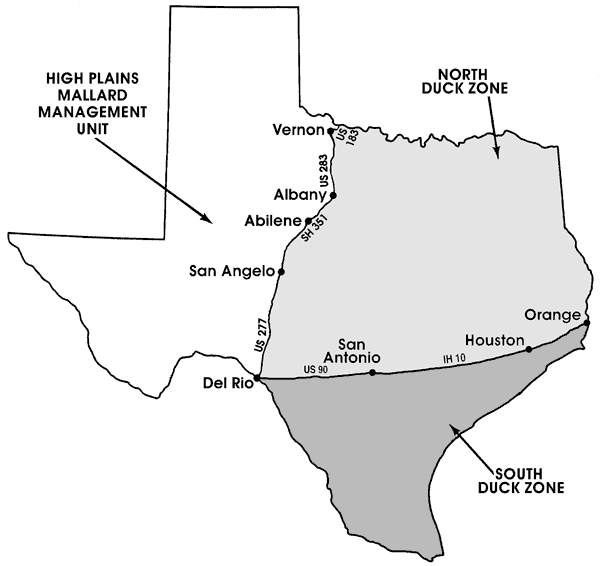
Ducks
North Zone
Regular season: Nov. 13-28, 2021 & Dec. 4, 2021 – Jan. 30, 2022
“Dusky” duck: Nov. 18 – 28, 2021 & Dec. 4, 2021 – Jan. 30, 2022
Youth-only: Nov. 6-7, 2021
South Zone
Regular season: Nov. 6-28, 2021 & Dec. 11, 2021 – Jan. 30, 2022
“Dusky” duck: Nov. 11 – 28, 2021 & Dec. 11, 2021 – Jan. 30, 2022
Youth-only: Oct. 30-31, 2021
High Plains Mallard Management Unit
Regular season: Oct. 30-31, 2021 & Nov. 5, 2021 – Jan. 30, 2022
“Dusky” duck: Nov. 8, 2021 – Jan. 30, 2022
Youth-only: Oct. 23-24, 2021
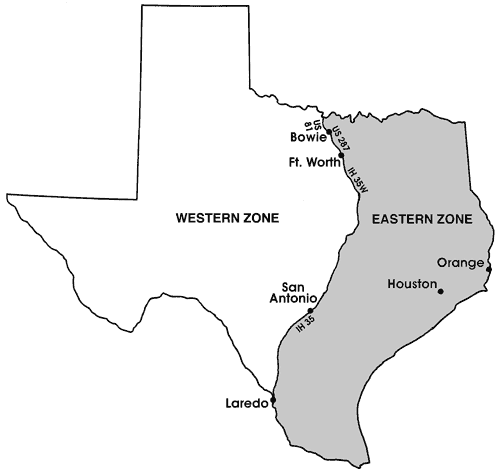
Geese
East Zone
Light & dark geese: Nov. 6, 2021 – Jan. 30, 2022
Light goose conservation order: Jan. 31 – March 13, 2022
West Zone
Light & dark geese: Nov. 13, 2021 – Feb. 13, 2022
Light goose conservation order: Feb. 14 – March 13, 2022
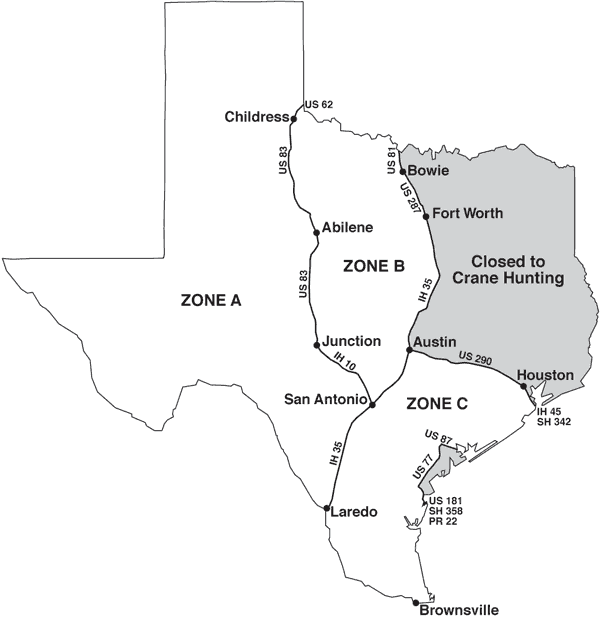
Sandhill Cranes
Zone A: Oct. 30, 2021 – Jan. 30, 2022
Zone B: Nov. 26, 2021 – Jan. 30, 2022
Zone C: Dec. 18, 2021 – Jan. 23, 2022
Texas Duck, Goose and Sandhill Crane Bag Limits
Duck Bag Limit: 6/day in the aggregate to include no more than 5 mallards (of which only 2 may be hens), 3 wood ducks, 2 redheads, 2 canvasback, 1 pintail, 1 scaup, 1 “dusky duck” (mottled, black or Mexican-like) may only be taken after the first 5 days of the season in the respective zones. Mergansers: 5/day with no more than 2 hooded mergansers. Coots: 15/day. Possession limit is 3 times the daily bag limit for all migratory game birds except snow geese which have no possession limit.
Goose Bag Limit: 5 dark geese, to include no more than 2 white-fronted geese, 10 light geese (no possession limit on light geese).
Sandhill Crane Bag Limit: Zones A and B: Bag Limit: 3, possession limit 9; Zone C: Bag Limit: 2, possession limit 6
Texas hunting accident deaths center on improper handling of firearms
















